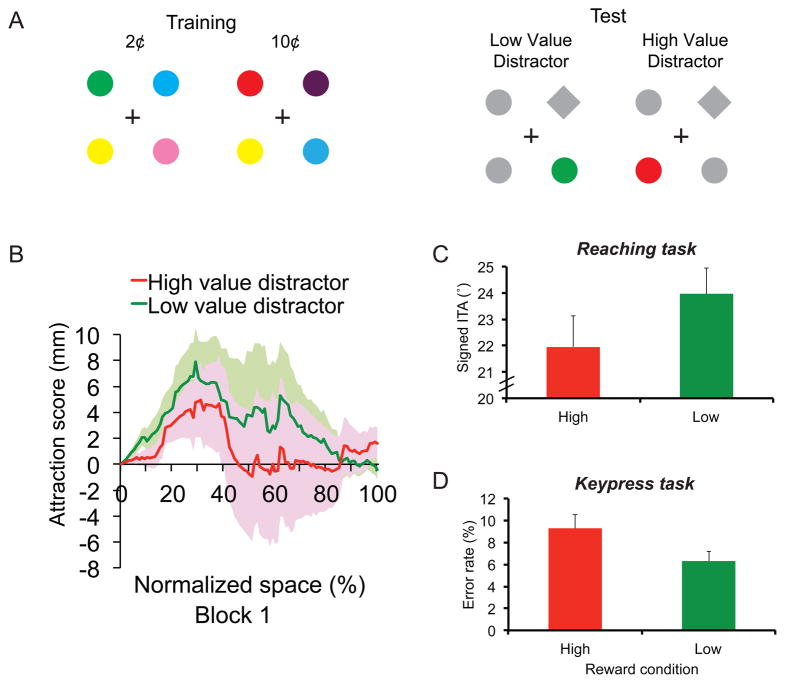Figure 4.
Stimuli and data from Experiments 4 and 5. A) Sample displays for the training and test phases of Experiment 4. Participants were required to reach to the red or green target during the training phase, and to the unique shape during the test phase. Experiment 5 required a keypress response instead of a reach movement to indicate the orientation of a line inside the target. B) Distractor attraction scores calculated across the entire resampled movement, averaged across all subjects, for Block 1 of the test phase in Experiment 4. The red line shows scores for the high-reward associated distractor, and the green line shows scores for the low-reward associated distractor. Positive scores indicate hand position that is pulled towards the location of the color distractor on distractor present trials. C) Experiment 4 initial trajectory angles for high and low reward associated distractors. D) Experiment 5 keypress error rate for high and low reward distractors. All error bars reflect S.E.M.

